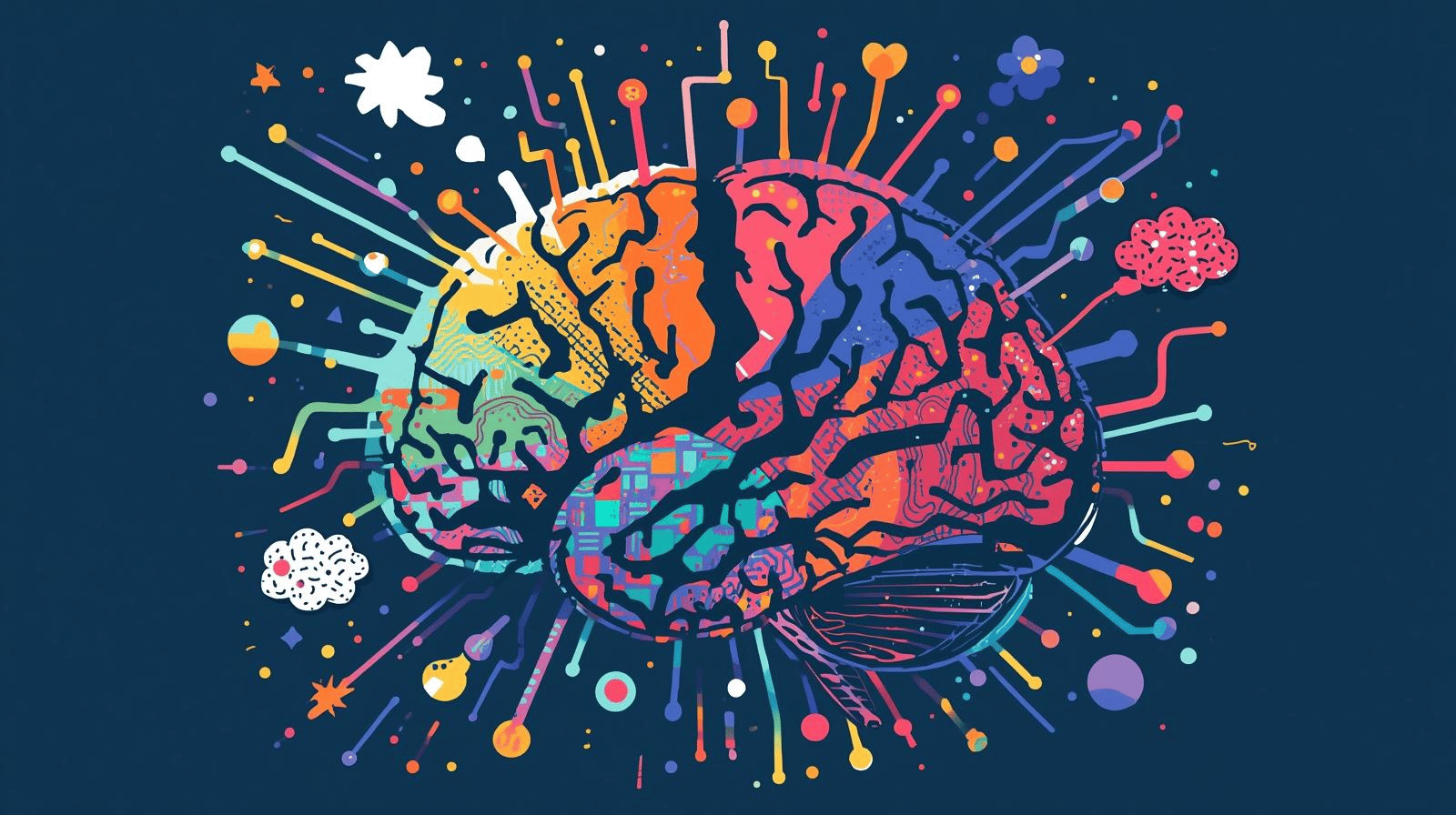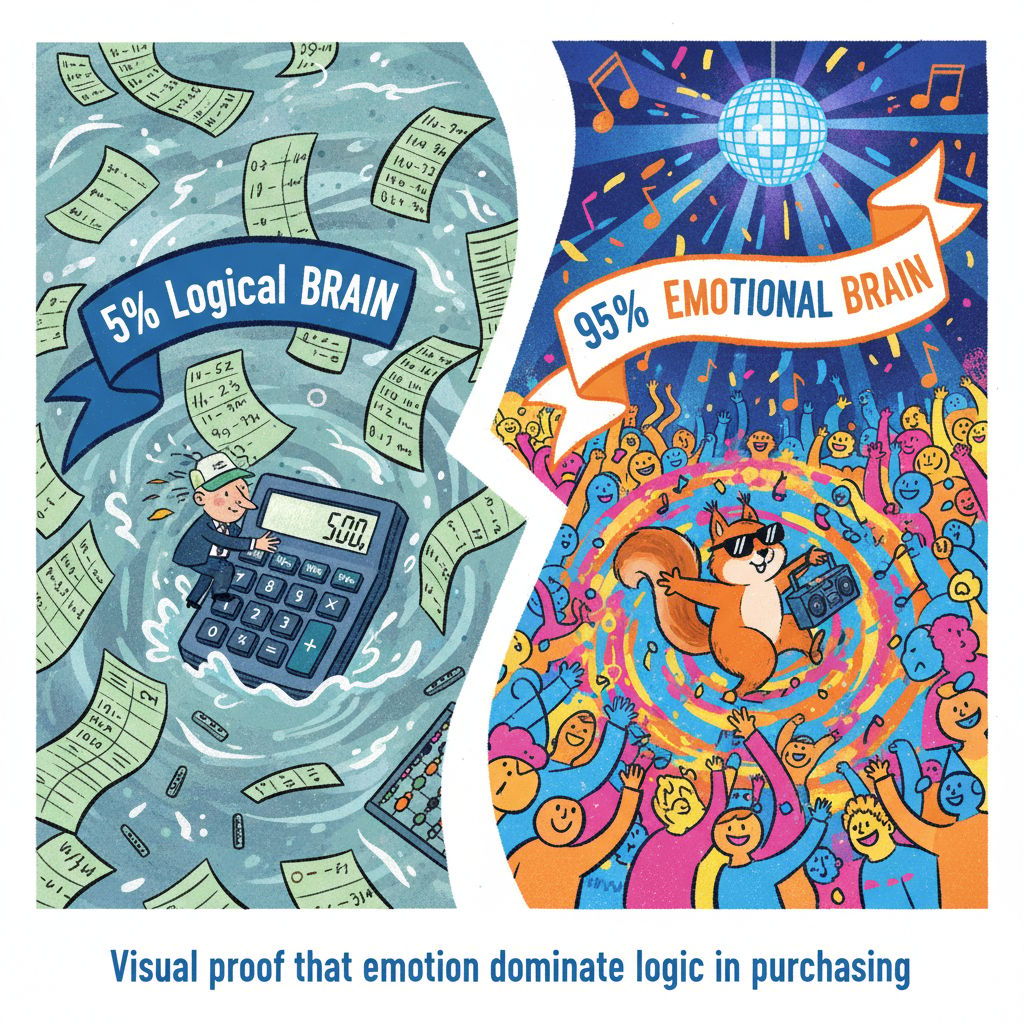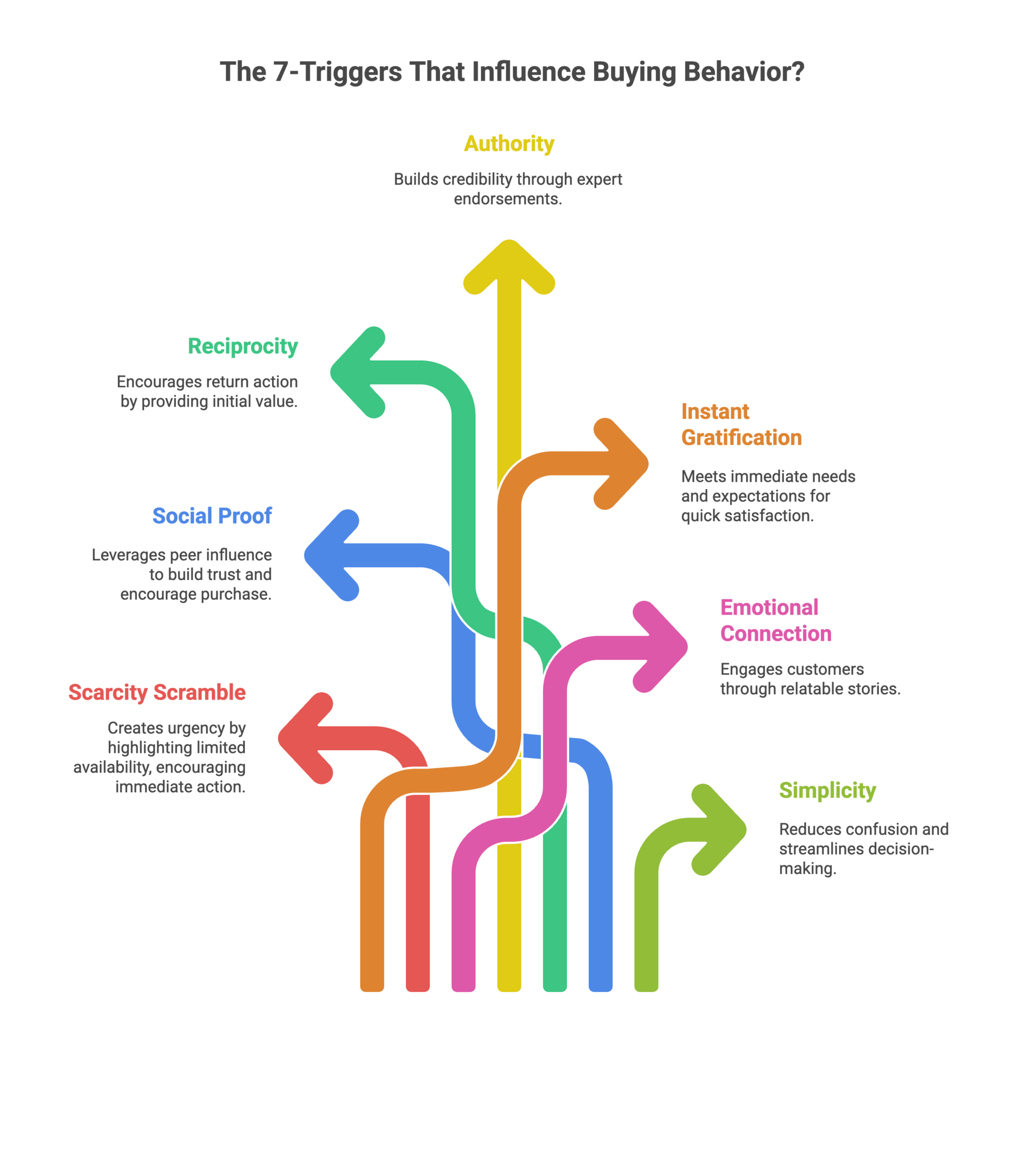- StartSmart Insider
- Posts
- Monkey Brain vs. Logical Brain (Guess Who Wins)
Monkey Brain vs. Logical Brain (Guess Who Wins)
Even experts fall for basic brain hacks

Hey, Coach Will here.....
Are you still trying to win customers with logic and features, as if it were 1999, while your competitors are hijacking their dopamine receptors and laughing all the way to the bank?
To illustrate what I mean, check this out.
A guy I played golf with recently was sporting a wild new pair of $400 golf shoes. Same model that some PGA Tour pros wear and swear by.
This guy, who shoots 95 on a good day and plays maybe twice a month.
But here's what's brilliant...
He didn’t buy "waterproof leather" or "advanced traction spikes."
He was sold on "Playing like a Champion."
He wanted to be one of those weekend golfers sinking crucial putts and celebrating like they'd won a major.
He wants to be the guy who finally breaks 80, or the retiree who gets his first hole-in-one.
Here's the psychology: They triggered "aspirational identity." This guy didn't see golf shoes... he saw himself confidently walking down the 18th fairway, playing the best golf of his life.
When a product becomes the bridge between who we are and who we want to be, logic goes out the window. (Boy, I know this well.)
Great marketers used social proof brilliantly.
Not testimonials about shoe durability, but stories of breakthrough rounds.
Our brains think, "If someone like me can do it, maybe I can too."
The endgame? He’s hoping to drop three strokes off his handicap. The shoes didn't just sell him footwear - they sold him a new identity as a "serious golfer."
While competitors talked about "moisture-wicking technology," the winners are selling a transformation.
📋 What's Inside This Week:
I Duped Myself! - It happened again
The Toothpaste Trap - Why you walk in for one thing and leave broke
Your Brain's Buy Button - The seven psychological triggers that open wallets
Ethics - Influence vs manipulation (and why it matters)
StartSmart AI Power Prompt - Generate psychological triggers for your business
The Pulse Poll - Your biggest selling challenge today
That's a Wrap!
🎪 I Duped Myself!
Last month, I fell victim to the oldest trick in the book—and I TEACH this stuff.
I was researching email automation tools for a client (very professional, very logical). Started comparing features in a spreadsheet.
You know, being all analytical and smart about it. Then I saw it: "Only 2 spots left at this price."
My rational brain said, "That's obviously fake urgency."
My monkey brain said, "BUY NOW OR DIE."
Guess which one had the credit card?
Twenty minutes later, I'm the proud owner of an annual subscription I didn't need until next quarter.
But here's what fascinated me—even knowing it was a psychological trigger, even teaching this stuff daily, I still felt the physical response.
Heart rate up. Slight panic. The overwhelming need to act NOW.
That's when it hit me: We're not selling to the 5% of the brain that makes spreadsheets.
We're selling to the 95% who are basically caffeinated squirrels with credit cards.
And if you're not speaking squirrel, you're leaving money on the table.

🔥 The Toothpaste Trap: Your Brain Sabotages Your Wallet
Here's a hard truth: Your customers aren't actually buying your product.
They're buying the story their brain tells them about your product.
Science tells us that 95% of purchasing decisions occur in the subconscious mind, while only 5% take place in the logical brain.
It's just the intern who writes up the justification memo after the CEO (emotions) has already made the call.
This is why you walk into Target for toothpaste and walk out $150 lighter with a cart full of things you didn't know existed five minutes ago.
Your emotional brain got hijacked by psychological triggers, and your logical brain is still back in aisle three trying to compare fluoride levels.
But that's where most people fall short...
AI Agents For The Entire Customer Journey
Ready to Transform Your Enterprise With AI Agents?
Support teams today face rising ticket volumes, shrinking budgets, and growing customer expectations. Hiring more agents isn’t the answer anymore. What if you could resolve customer inquiries ten times faster, with better outcomes, and at a fraction of the cost it takes you today?
Maven AGI is an enterprise AI platform that provides a unified agent experience across the entire customer journey. By integrating with over 100 existing go-to-market systems across sales, customer success, and support, Maven enables organizations to deliver faster, more consistent, and more personalized interactions- all without replacing infrastructure.
Maven AI agents autonomously resolve up to 93% of support inquiries and reduce related costs by as much as 80%. Designed for complex, high-friction environments, Maven unifies systems, syncs functions, and orchestrates real-time action across your enterprise.
1. The Scarcity Scramble (FOMO) - Remember my email tool disaster? That's FOMO in action.
When something might disappear, our caveman brain panics, as if the last mammoth is leaving town.
Use it: Real limitations, not fake countdown timers that reset every time someone refreshes the page. (We see you, sleazy marketers.)
2. The Herd Highway (Social Proof) -"But everyone else is doing it!" isn't just for teenagers.
39% of shoppers buy because influencers said so. Your brain literally assumes the crowd knows something you don't.
Use it: Testimonials, reviews, and "bestseller" badges. Bonus points if the testimonial mentions specific, embarrassing problems.
3. The Guilt Gift (Reciprocity) - Give something valuable first, and people feel physically uncomfortable until they give back.
It's why free samples at Costco turn into $300 grocery bills.
Use it: Free guides, tools, or consultations. Make it genuinely valuable, not a thinly-veiled sales pitch.
4. The Lab Coat Effect (Authority) - We're programmed to trust experts, even when the "expert" is just someone in a white coat holding a clipboard.
Use it: Credentials, certifications, and case studies. Even better if you can admit where you're not an expert—this paradoxically builds more trust.
5. The Amazon Prime Syndrome (Instant Gratification) - 83% of consumers demand free shipping. Not want. DEMAND.
Our brains have been rewired to expect immediate dopamine delivery.
Use it: Achieve quick results, fast wins, and immediate access. If you can't deliver the product instantly, deliver the feeling instantly.
6. The Lifetime Movie Method (Emotional Connection) - Stories sell better than specs. Period.
Your customer needs to see themselves as the hero of your product's story.
Use it: Customer success stories where they're the star, not you. You're Yoda, they're Luke.
7. The Apple Approach (Simplicity) - Confused customers don't buy. If your grandma can't understand your offer in five seconds, you're losing sales.
Use it: One clear offer. One obvious button. One simple promise.
Now here's the uncomfortable truth...

🎯 Ethics: Influence vs Manipulation
Using psychology to help customers get what they already want = ethical influence.
Using psychology to trick people into buying garbage = manipulation (and bad business).
The difference? Value and honesty.
If your product genuinely solves problems and you're using these triggers to help people overcome their hesitation to improve their lives, you're one of the good guys.
If you're using fake scarcity to sell snake oil, well... karma will catch up with you!
🤖 StartSmart™ AI Power Prompt
Copy this prompt into ChatGPT, Claude, or your favorite AI tool for immediate results:
You are a consumer psychology expert and ethical marketing strategist. I need help identifying the right psychological triggers for my business.
My situation: I run a [YOUR BUSINESS TYPE] that serves [YOUR TARGET AUDIENCE] who struggle with [MAIN PROBLEM YOU SOLVE].
Please provide:
My top 3 psychological triggers based on my audience, and offer specific examples of ethical ways to implement each trigger warning signs that I'm crossing into manipulation territory.
Format your response as a practical action plan with examples I can implement this week. Include specific copy examples and where to place them.
Pro tip: Remember to bookmark this prompt and refer to it whenever you're launching a new product or service. The AI will then offer you various triggers tailored to each different offer.
🛠️ Tools That Work
This week's game-changer: Hotjar
What it does: Shows where users rage-quit on your site via heatmaps and recordings
Why Coach Will recommends: I found my "Buy Now" button was invisible on mobile for three months. That's like a store with a hidden cash register.
Best for: Anyone who suspects their website confuses visitors but can't identify why.
Getting started: Install free and watch five sessions. Be prepared to be shocked.
Pricing: Free for 35 sessions/day, paid from $39/month.
Integration: Compatible with most platforms; installs in 5 minutes.
Learning curve: Problems become clear immediately. Fixing is on you.
Sometimes, the issue isn't with your product, but rather that users can't find the buy button.
📊 The Pulse Poll
What's your biggest selling challenge today? |
🎯 That's a Wrap!
Big takeaway: Your customers' brains are beautifully broken, predictably irrational, and waiting for you to speak their emotional language.
It's your move: Pick ONE psychological trigger and add it to your best-selling product page this week—just one. Start there.
🔥 Key Points this week:
Emotions drive 95% of purchases: Stop selling to spreadsheets, start selling to squirrels
Seven triggers that work: FOMO, social proof, reciprocity, authority, instant gratification, stories, and simplicity
Ethics matter: Use psychology to help, not manipulate—karma has a long memory
Tools mentioned: Hotjar for seeing confusion in real-time, AI prompts for finding your triggers
Action step: Do the 15-minute confusion audit right now—your bank account will thank you
Remember, you're in charge! Think Big, Play Smart, Win More!
-Coach Will
P.S. Stop reading this and check if people can actually find your buy button. Seriously. I'll wait. Because if you can't even let people give you money, we need to have a different conversation.
💬 Join the Waitlist
Exciting news! The StartSmart™ Business Toolbox is almost here to support your entrepreneurial journey.
Remember that AI prompt I mentioned earlier? That's just one of over 50 proven prompts we've been carefully crafting for entrepreneurs who want to save time and energy by letting a computer do what it does best.
While many are busy treating ChatGPT like a fancy search engine, we've discovered how to seamlessly integrate AI into your business in a way that keeps your unique personality intact — and doesn't drive you crazy.
Be sure to take advantage of our early-bird pricing when we launch next month! You can also get a sneak peek at our StartSmart AI Crewchief GPT by signing up for our list.
Fair warning: This isn't just another "AI will solve all your problems" blueprint. If you're after magic solutions, keep scrolling. If you're looking for practical tools that really work, you're in the right place.
Modernize your marketing with AdQuick
AdQuick unlocks the benefits of Out Of Home (OOH) advertising in a way no one else has. Approaching the problem with eyes to performance, created for marketers with the engineering excellence you’ve come to expect for the internet.
Marketers agree OOH is one of the best ways for building brand awareness, reaching new customers, and reinforcing your brand message. It’s just been difficult to scale. But with AdQuick, you can easily plan, deploy and measure campaigns just as easily as digital ads, making them a no-brainer to add to your team’s toolbox.
DID A FRIEND FORWARD YOU THIS NEWSLETTER?
First, give them a BIG thank you!
Then, subscribe here for your free weekly dose of StartSmart™ Life Hacks! Until next week, remember: In a world of complicated choices, be the obvious one."
Quick note: Some links on this page may earn us a small commission if you decide to try them out. We only recommend tools we use and love.


Reply